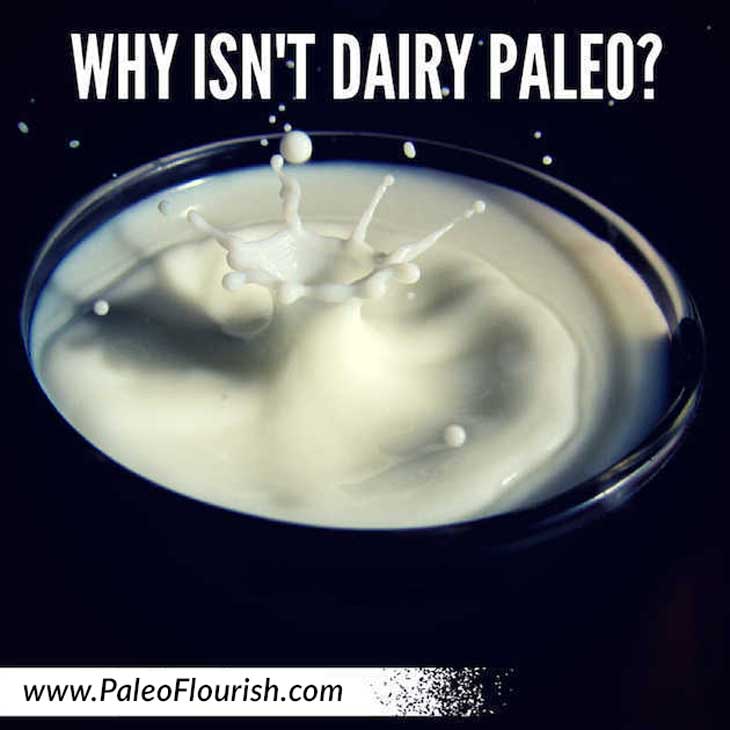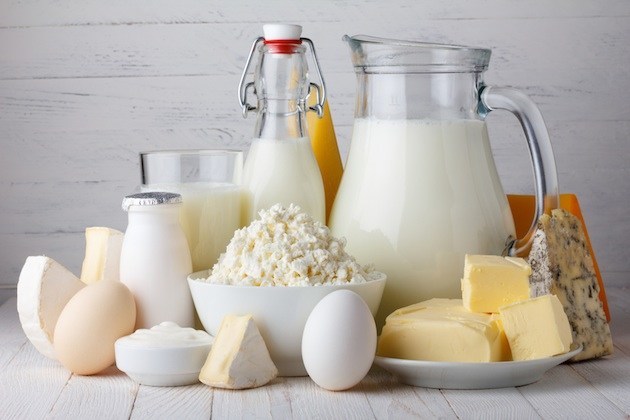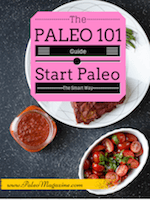Why Isn’t Dairy Paleo?

Despite what most websites say, dairy actually IS Paleo.
But only certain types of dairy, and only after you’ve determined that you’re not sensitive to dairy.
When Is Dairy Paleo?
1. Dairy is Paleo so long as it’s raw (or made from raw milk) or fermented.
2. [Preferable but not necessary] And preferably, the cow, goat, or sheep will have been pastured (not pasteurized). This means that the animal generally eats grass (although do note that dairy cows cannot be 100% pastured, as they’ll stop producing milk for long periods during the year). In some countries, feeding cows grass is normal, but in the US, cows are often fed corn that’s been especially mass produced for that purpose (not the typical corn humans eat).
3. You have eliminated dairy from your diet for 60 days and the reintroduced it without any ill effects.

Why Is Raw Dairy Paleo?
When the dairy is raw or fermented, dairy is very high in nutrients (especially A, D, and K, as well as K2 if you’re eating aged cheese or fermented dairy). Additionally, dairy is very low in toxins.
When Dairy is NOT Paleo
Pasteurized and homogenized dairy is never Paleo.
And if you’ve only ever eaten pasteurized dairy, and you react badly to it, then there’s an excellent chance that you actually don’t react badly to raw dairy.
The reason for this is because pasteurization destroys most of the enzymes and pretty much all of the bacteria that naturally occur in milk. And those enzymes and bacteria are highly important for your ability to digest and absorb dairy.
Your Reaction Matters Most, Though
More importantly than anything else, you need to ensure that you’re not sensitive to dairy.
There are 2 big ways (and a number of smaller ways) to be sensitive to dairy:
a. You can be lactose intolerant. If you’re of African or Asian descent, then you’re almost certainly lactose intolerant, although you may be no matter your ancestry. In general, if you eliminate dairy for 30-60 days, re-introduce it and find that you’re bloated or gassy, then you’re probably lactose intolerant.
b. You can be sensitive to casein. Casein is one of the forms of protein in dairy, and many people are sensitive to casein without knowing it. Like lactose, the way to find out is to eliminate dairy for a while and then re-introduce it. With casein sensitivities, you’ll normally notice some sort of inflammation, which often occurs as acne, arthritis, joint pain or stiffness, sinus congestion, or various other conditions. This is something that you would notice almost immediately.
It’s hard to emphasize enough how important it is to remove dairy from your life for a while (at least 60 days) so that when you reintroduce it, you can properly judge how it affects you.
Also, remember that not all dairy is created equal. The pasteurized milk that you can buy in most stores has had all of the enzymes and bacteria that naturally occur in the milk destroyed. This means that your body won’t be able to break down or process the milk nearly as well as it should.
However, if you do find that you tolerate dairy well and can get raw or fermented dairy products, then they can be incredibly nutritious and yummy.
Images: Copyright © Dmytro Sukharevskyy from Fotolia, Andrew Magill cc

